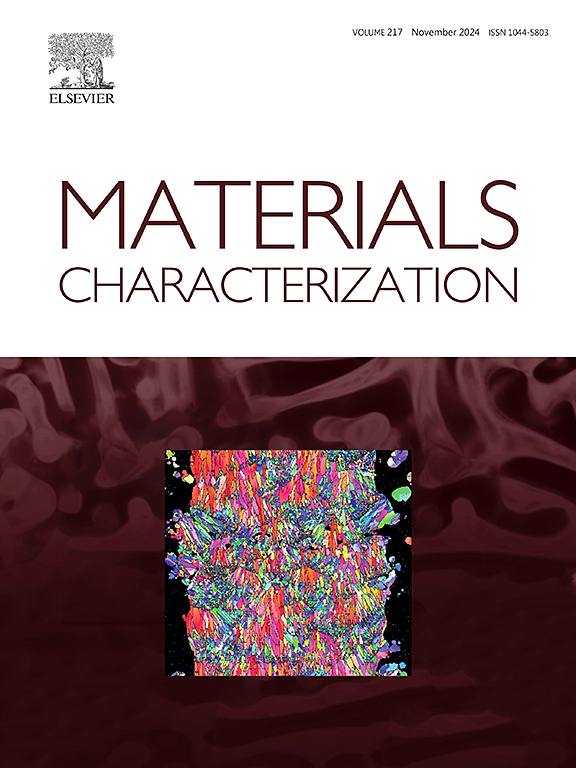Glow discharge sputtering technology and apparatus for microstructural preparation of metallic materials
IF 4.8
2区 材料科学
Q1 MATERIALS SCIENCE, CHARACTERIZATION & TESTING
引用次数: 0
Abstract
Authentic and efficient preparation of microstructures over large surface areas of materials is crucial for accurate characterization of material properties. Traditional microstructural preparation techniques, such as mechanical polishing, chemical etching, and ion beam milling, suffer from limitations including surface damage, complex procedures, and low efficiency. In contrast, glow discharge sputtering (GDS) operates in a high-pressure argon atmosphere (several millibars) and utilizes a wide-angle, low-energy argon ion beam to achieve uniform large-area sputtering with minimal material damage and high preparation efficiency. More importantly, the sputtering yield differences at grain/phase boundaries in GDS lead to selective sputtering behavior, which directly reveals the material's original microstructure, thereby eliminating the two essential steps of polishing and etching in traditional metallographic preparation. Commercial GDS instruments are exclusively designed for chemical composition analysis, lacking microstructural preparation capabilities. Furthermore, their restricted anode cylinder dimensions prevent them from meeting large-area preparation requirements. This study first employs numerical simulations to analyze glow discharge cathode sputtering behavior, confirming GDS's capability to preserve the material's original microstructural characteristics. Building upon this foundation, we designed and constructed a dedicated GDS apparatus for microstructural preparation, incorporating a successive approximation control algorithm to stabilize the glow discharge process. In practical applications, the integration of GDS with electron backscatter diffraction (EBSD) enabled three-dimensional reconstruction and visualization of GH4169 polycrystalline superalloy grains, revealing their three-dimensional morphology and spatial distribution. Additionally, GDS demonstrates versatility across various materials and characterization techniques. It significantly enhances microstructural image quality in EBSD, metallographic, and backscattered electron (BSE) imaging for materials including martensitic heat-resistant steel, T2 copper, and GH4096, effectively replacing polishing and etching in certain applications. This establishes GDS as an innovative approach for microstructural preparation in metallic materials.

金属材料微结构制备用辉光放电溅射技术及装置
在材料的大表面积上真实有效地制备微结构对于准确表征材料特性至关重要。传统的微结构制备技术,如机械抛光、化学蚀刻、离子束铣削等,存在表面损伤、工艺复杂、效率低等缺点。相比之下,辉光放电溅射(GDS)在高压氩气环境(几毫巴)下工作,利用广角、低能的氩气离子束实现均匀的大面积溅射,材料损伤最小,制备效率高。更重要的是,GDS在晶粒/相界处的溅射产率差异导致了选择性溅射行为,直接揭示了材料的原始微观结构,从而消除了传统金相制备中抛光和蚀刻两个必不可少的步骤。商用GDS仪器专门用于化学成分分析,缺乏微结构制备能力。此外,它们的阳极圆柱尺寸有限,无法满足大面积制备要求。本研究首先通过数值模拟分析了辉光放电阴极溅射行为,证实了GDS能够保持材料原有的微观结构特征。在此基础上,我们设计并构建了用于微结构制备的专用GDS装置,并结合逐次逼近控制算法来稳定辉光放电过程。在实际应用中,GDS与电子背散射衍射(EBSD)相结合,实现了GH4169多晶高温合金晶粒的三维重建和可视化,揭示了GH4169多晶高温合金晶粒的三维形貌和空间分布。此外,GDS展示了各种材料和表征技术的通用性。它显著提高了包括马氏体耐热钢、T2铜和GH4096在内的材料的EBSD、金相和背散射电子(BSE)成像的显微结构图像质量,在某些应用中有效地取代了抛光和蚀刻。这确立了GDS作为金属材料微结构制备的创新方法。
本文章由计算机程序翻译,如有差异,请以英文原文为准。
求助全文
约1分钟内获得全文
求助全文
来源期刊

Materials Characterization
工程技术-材料科学:表征与测试
CiteScore
7.60
自引率
8.50%
发文量
746
审稿时长
36 days
期刊介绍:
Materials Characterization features original articles and state-of-the-art reviews on theoretical and practical aspects of the structure and behaviour of materials.
The Journal focuses on all characterization techniques, including all forms of microscopy (light, electron, acoustic, etc.,) and analysis (especially microanalysis and surface analytical techniques). Developments in both this wide range of techniques and their application to the quantification of the microstructure of materials are essential facets of the Journal.
The Journal provides the Materials Scientist/Engineer with up-to-date information on many types of materials with an underlying theme of explaining the behavior of materials using novel approaches. Materials covered by the journal include:
Metals & Alloys
Ceramics
Nanomaterials
Biomedical materials
Optical materials
Composites
Natural Materials.
 求助内容:
求助内容: 应助结果提醒方式:
应助结果提醒方式:


